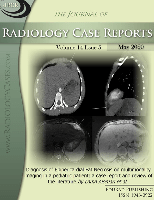
Journal of Radiology Case Reports
Scope & Guideline
Illuminating Radiology's Path with Open Access Case Reports
Introduction
Aims and Scopes
- Case Reports in Radiology:
The journal primarily publishes case reports that highlight unique or rare radiological findings, contributing to the body of knowledge in the field. - Interdisciplinary Approach:
It often involves collaboration across various medical disciplines, showcasing how radiological findings can impact patient management and treatment. - Educational Value:
By presenting detailed imaging findings and clinical correlations, the journal serves as an educational resource for radiologists and healthcare professionals. - Innovative Imaging Techniques:
The journal emphasizes the use of advanced imaging techniques and technologies, providing insights into their applications in clinical scenarios. - Pathological Correlation:
Many articles include pathological correlation, linking imaging findings to histopathological results, which aids in understanding disease processes.
Trending and Emerging
- Rare and Complex Cases:
There is a growing trend towards publishing reports on rare and complex cases that challenge standard diagnostic practices, providing valuable learning opportunities for radiologists. - Interventional Radiology:
An increase in case reports involving interventional radiology techniques highlights the growing importance of this field in patient management and treatment. - Pediatric Radiology:
There is a notable rise in case reports focusing on pediatric patients, emphasizing the unique challenges and considerations in imaging children. - Multimodal Imaging:
The journal is increasingly featuring case reports that utilize multimodal imaging techniques, such as combining MRI, CT, and PET scans, to enhance diagnostic accuracy. - Pathology-Linked Imaging:
Emerging themes include a focus on linking imaging findings with pathological outcomes, underlining the importance of correlating radiology with histopathology for comprehensive patient care.
Declining or Waning
- Generalized Imaging Techniques:
There has been a noticeable decrease in papers focusing on generalized imaging techniques without specific clinical context, indicating a preference for more unique or complex cases. - Common Conditions:
Reports on common conditions that are well-established in the literature, such as basic fractures or routine imaging findings, appear to be less frequent as the journal aims to provide more novel contributions. - Historical Reviews:
Case reports that primarily focus on historical reviews of previously documented cases are becoming less common, with a greater emphasis now on new findings and innovative approaches.
Similar Journals
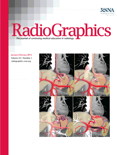
RADIOGRAPHICS
Leading the Way in Radiographic DiscoveriesRADIOGRAPHICS, published by the Radiological Society of North America (RSNA), is a premier academic journal dedicated to the field of radiology, nuclear medicine, and imaging. With an impressive impact factor and recognition in the top quartile (Q1) of both Medicine (miscellaneous) and Radiology, Nuclear Medicine and Imaging categories, RADIOGRAPHICS stands out as a leading platform for disseminating high-quality research and clinical findings. Since its inception in 1985 and projected to run until 2024, the journal has consistently provided essential insights into cutting-edge imaging techniques and advancements in radiological practices, making it invaluable for professionals, researchers, and students alike. Although it does not offer open access, the journal continues to flourish with a robust reputation, ranked 35th in its field according to Scopus, placing it within the 89th percentile of its category. With an unwavering commitment to enhancing the understanding and application of radiological sciences, RADIOGRAPHICS remains a pivotal resource for advancing knowledge and expertise within the medical community.
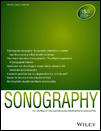
Sonography
Exploring Innovations in Radiology and ImagingSonography is a prominent academic journal published by WILEY, focusing on the vital field of radiology, nuclear medicine, and imaging. Since its inception in 2014, this journal has garnered attention for its commitment to advancing the understanding of sonographic techniques and their applications in medical practice. Despite currently holding a Q4 category ranking within its field and a Scopus rank of #270 out of 333, Sonography remains a valuable resource for researchers, professionals, and students alike, bridging the gap between basic science and clinical practice. The journal is accessible in the United States and encourages contributions that explore innovative sonographic methodologies, diagnostic advancements, and patient-centric research. As an essential platform for discourse in this specialty, Sonography plays a crucial role in shaping future developments in the occupation while fostering collaboration and knowledge-sharing among its readership.
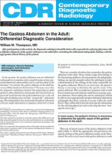
Contemporary Diagnostic Radiology
Shaping the Landscape of Radiological ScienceContemporary Diagnostic Radiology is a pivotal journal in the field of medical imaging and radiology, published by Lippincott Williams & Wilkins. With an ISSN of 0149-9009 and an E-ISSN of 1938-1395, this journal serves as an essential platform for disseminating high-quality research and advances in diagnostic radiology and related disciplines. While it is categorized in the lower quartiles (Q4) for its performance in the 2023 rankings in both Neurology, Radiology, Nuclear Medicine and Imaging, and Surgery, its focus on emerging technologies and methodologies in imaging continues to provide valuable insights for practitioners and researchers alike. The journal’s scope includes innovative diagnostic tools, imaging techniques, and case studies, fostering collaboration and knowledge sharing in the medical community. Although it does not offer open access options, its commitment to contributing to the ongoing dialogue in clinical imaging is undisputed, making it an essential resource for professionals seeking to stay abreast of current trends and research in the rapidly evolving landscape of diagnostic radiology.

Hong Kong Journal of Radiology
Pioneering Research for a Healthier TomorrowHong Kong Journal of Radiology, an esteemed publication of the Hong Kong Academy of Medicine Press, serves as a vital platform for disseminating innovative research in the field of radiology, nuclear medicine, and imaging. Established in 2011 and operating under an Open Access model since 2018, this journal not only promotes the sharing of knowledge but also enhances global accessibility to cutting-edge studies. With its ISSN 2223-6619 and E-ISSN 2307-4620, the journal strives to engage a diverse audience ranging from experienced professionals to aspiring scholars in the medical imaging domain. Despite its current ranking in the Q4 quartile of the Scopus category for radiology, the journal is committed to improving its standing by featuring high-quality research that addresses pressing issues in the field. The journal's convergence from 2011 to 2024 reflects its ongoing dedication to fostering academic excellence and encouraging collaborative discourse among researchers and practitioners globally. Located in Hong Kong, the journal plays a significant role in shaping the future of radiology education and practice in China and beyond.
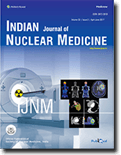
Indian Journal of Nuclear Medicine
Exploring Innovations in Diagnostic TherapyIndian Journal of Nuclear Medicine, published by Wolters Kluwer Medknow Publications, serves as a crucial platform for advancing knowledge and research in the field of nuclear medicine, a specialized domain crucial for diagnostic imaging and therapy. With an ISSN of 0972-3919 and an E-ISSN of 0974-0244, this esteemed journal has been a trusted source of information from 2010 to 2024. Situated in Mumbai, India, it caters to researchers and professionals with an interest in the interplay between radiology and innovative nuclear imaging techniques. Although classified as Q4 in Radiology, Nuclear Medicine, and Imaging in 2023, the journal actively contributes to the dialogue surrounding emerging technologies, clinical practices, and challenges in nuclear medicine, making it a significant addition to the academic discourse. While currently not categorized as Open Access, readers can benefit from the wealth of peer-reviewed articles that shape the future of nuclear medicine and its applications. As the impact factor and specific H-index details are not listed, the journal's potential for future growth and increased visibility in the academic community remains promising, positioning it as a commendable resource for students, researchers, and healthcare professionals dedicated to the advancement of medical imaging and therapy.

Diagnostic and Interventional Radiology
Exploring New Frontiers in Imaging and InterventionDiagnostic and Interventional Radiology, published by the Turkish Society of Radiology, is a renowned open-access journal dedicated to advancing the fields of radiology, nuclear medicine, and imaging. With its transition to open access in 2022, the journal aims to foster knowledge dissemination and accessibility for researchers, healthcare professionals, and students alike. This esteemed publication, indexed in Scopus, features a robust editorial board and peer-reviewed articles that contribute significantly to the body of work in cardiology, radiology, and related disciplines. The journal currently holds a significant position, reflected in its Category Quartiles ranking—Q2 in Radiology, Nuclear Medicine, and Imaging, and Q3 in Cardiology and Cardiovascular Medicine, highlighting its relevance and impact in these critical medical fields. Research published in this journal is vital for evolving diagnostic and interventional techniques, clearly situating it as a key resource for those seeking to stay at the forefront of radiological science.

Current Radiology Reports
Elevating clinical practice through innovative radiology reports.Current Radiology Reports is an esteemed journal published by SPRINGERNATURE, focusing on the dynamic field of radiology, nuclear medicine, and imaging. With a commitment to advancing knowledge and promoting innovative practices, this journal serves as a valuable resource for researchers, healthcare professionals, and students striving to stay at the forefront of radiological advancements. Featuring an impressive impact factor and recognized as a Q3 journal within its category as of 2023, it highlights critical developments and comprehensive reviews that inform clinical practice and research methodologies. Although it operates under a subscription model, the journal provides a rich repository of peer-reviewed content, covering a wide range of topics from diagnostic imaging to therapeutic applications. With a publication span from 2013 to 2024, Current Radiology Reports continues to uphold its reputation as a leading publication critical for anyone involved in the radiology profession.

Diagnostic and Interventional Imaging
Transforming Insights into Innovative Imaging SolutionsDiagnostic and Interventional Imaging, published by Elsevier Masson, stands as a prominent journal in the fields of Radiology, Nuclear Medicine, and Imaging. With a significant impact factor and a reputation for high-quality research, this journal is dedicated to advancing the understanding and application of diagnostic and interventional imaging techniques. It has achieved an impressive Q1 ranking across multiple categories including Medicine (miscellaneous) and Radiological and Ultrasound Technology, demonstrating its esteemed position within the academic community. The journal features cutting-edge studies and reviews, reflecting the latest innovations and practices from 2012 to 2024. Researchers, healthcare professionals, and students alike can look forward to accessing valuable insights that drive forward the discipline and improve patient outcomes, as evidenced by its robust Scopus rankings placing it among the top journals in its domain.

Imaging
Exploring the Future of Radiology and UltrasoundImaging, published by AKADEMIAI KIADO ZRT, is an esteemed open-access journal dedicated to the field of medical imaging, established in 2020. With an E-ISSN of 2732-0960 and based in Budapest, Hungary, this journal provides a vital platform for the dissemination of cutting-edge research and advancements in imaging techniques, especially in the realms of radiology, nuclear medicine, and ultrasound technology. While currently positioned in the Q4 category across multiple medical specialties, the journal continues to strive for improvements in visibility and impact, contributing to the evolving discourse in medical imaging. The journal aims to facilitate an inclusive and collaborative environment for researchers, professionals, and students, inviting them to share their findings and insights to enhance the field's development. With open-access availability since its inception, Imaging ensures free and easy access to its content, fostering a greater understanding and appreciation of innovative imaging practices worldwide.

European Journal of Radiology Open
Pioneering Open Access in Radiological ResearchThe European Journal of Radiology Open, published by Elsevier, has established itself as a pivotal platform for disseminating high-quality research in the field of radiology, nuclear medicine, and imaging since its inception in 2014. This open access journal, holding a commendable Q2 ranking in the esteemed 2023 Scopus categorization, seeks to foster a collaborative environment where researchers, professionals, and students can share innovative findings and advancements. Operating under the E-ISSN 2352-0477, this journal contributes to the broader scientific discourse with a commitment to accessibility and transparency, ensuring that cutting-edge research is available to a global audience. The journal's dual focus on rigorous peer review and rapid publication processes underscores its importance within the academic community, aiming to empower professionals with the latest insights in the dynamic landscape of medical imaging.